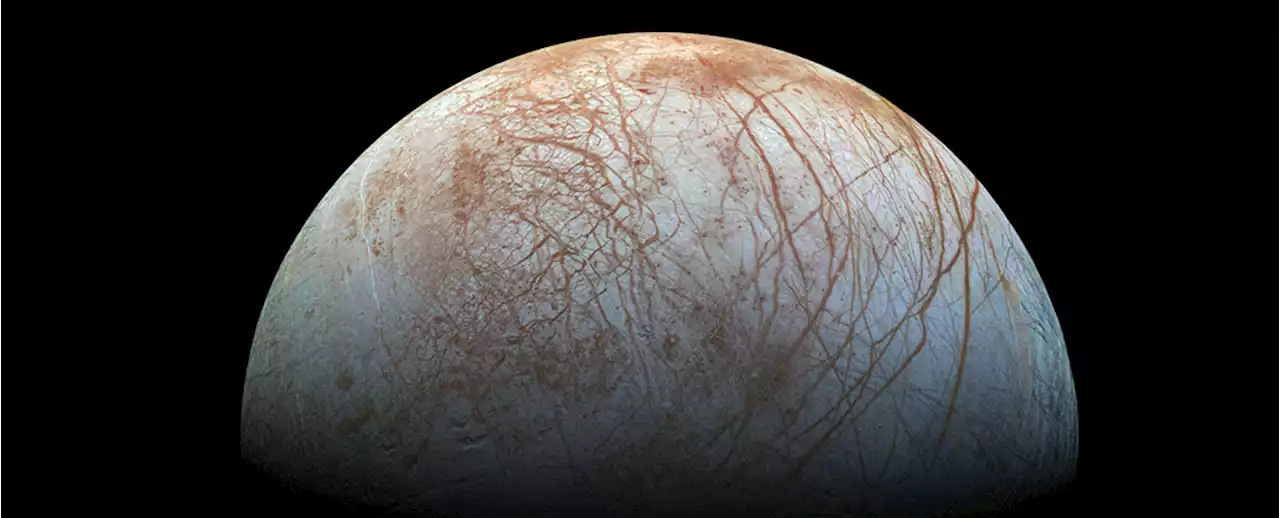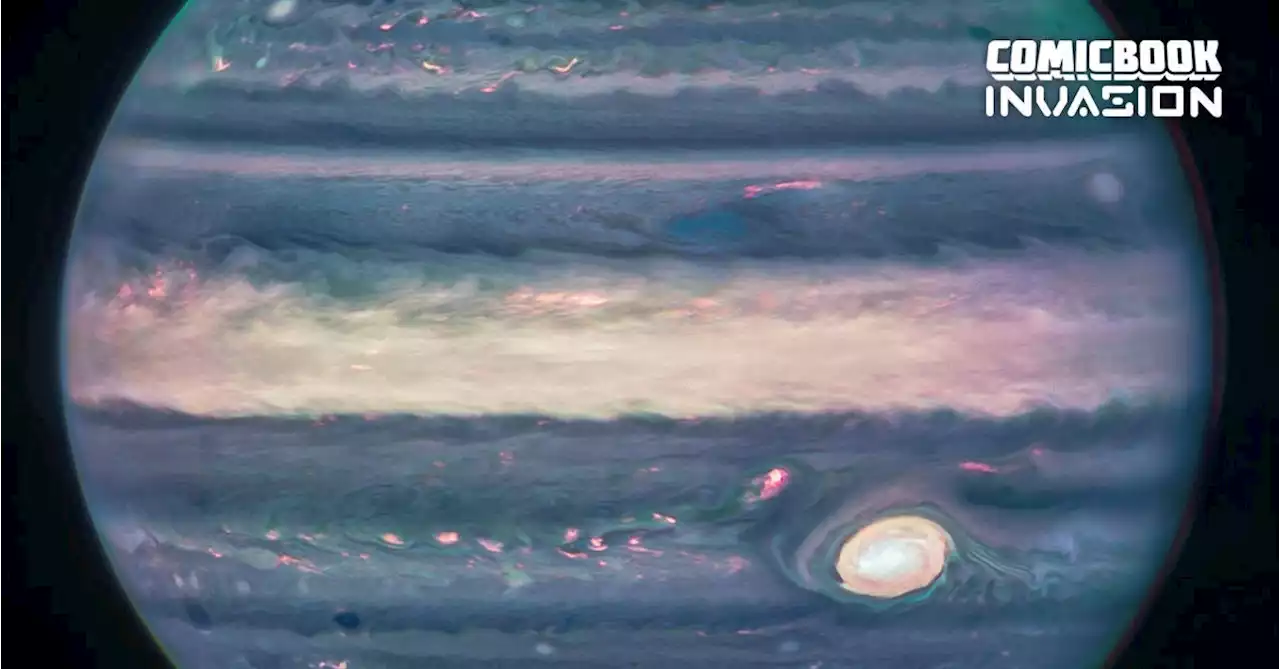Data from NASA's James Webb Space Telescope shows carbon dioxide on a region of Jupiter's moon Europa, suggesting it potentially could harbor conditions suitable for life.
Space Telescope shows carbon dioxide on a region of Jupiter's moon Europa, suggesting it potentially could harbor conditions suitable for life.two studies"Understanding the chemistry of Europa's ocean will help us determine whether it's hostile to life as we know it, or if it might be a good place for life," Geronimo Villanueva, of NASA's Goddard Space Flight Center,Villanueva is the lead author of one of the studies.
NIRCam on NASA’s James Webb Space Telescope captured this picture of the surface of Jupiter’s moon Europa. Webb identified carbon dioxide on the icy surface of Europa that likely originated in the moon’s subsurface ocean. Photo courtesy of NASA "We now think we have observational evidence that the carbon we see on Europa's surface came from the ocean. That's not a trivial thing. Carbon is a biologically essential element," Samantha Trumbo, of Cornell University in Ithaca and lead author of the other paper, said.
Heavy concentrations of carbon dioxide in the salty Tara Regio region, where the surface ice has been disrupted, suggest the carbon originated deep in the ocean. This suggests a similarity with Earth's deep-sea hydrothermal vent systems, where life on Earth may have originated,Villanueva's looked for a plume of water vapor but found no evidence in the new Webb data. Plumes were tentatively detected in previous research, suggesting they could be variable.
"This work gives a first hint of all the amazing solar system science we'll be able to do with Webb," Heidi Hammel of the Association of Universities for Research in Astronomy, said in the NASA news release.
México Últimas Noticias, México Titulares
Similar News:También puedes leer noticias similares a ésta que hemos recopilado de otras fuentes de noticias.
 There's a Mystery Source of Carbon on The Surface of Jupiter's Moon EuropaCarbon dioxide detected on Jupiter's moon Europa comes from the vast ocean beneath its icy shell, research using James Webb Space Telescope data indicated on Thursday, potentially bolstering hopes the hidden water could harbour life.
There's a Mystery Source of Carbon on The Surface of Jupiter's Moon EuropaCarbon dioxide detected on Jupiter's moon Europa comes from the vast ocean beneath its icy shell, research using James Webb Space Telescope data indicated on Thursday, potentially bolstering hopes the hidden water could harbour life.
Leer más »
 Stellar Concert: Astronomers Tune In to the Sounds of Twinkling StarsNew study is the first to determine how much stars should innately twinkle. Many people know that stars appear to twinkle because our atmosphere bends starlight as it travels to Earth. But stars also have an innate “twinkle” — caused by rippling waves of gas on their surfaces — that is imperceptibl
Stellar Concert: Astronomers Tune In to the Sounds of Twinkling StarsNew study is the first to determine how much stars should innately twinkle. Many people know that stars appear to twinkle because our atmosphere bends starlight as it travels to Earth. But stars also have an innate “twinkle” — caused by rippling waves of gas on their surfaces — that is imperceptibl
Leer más »
 NASA Finds Building Block of Life on One of Jupiter's MoonsA new study reveals carbon dioxide has been found on Europa.
NASA Finds Building Block of Life on One of Jupiter's MoonsA new study reveals carbon dioxide has been found on Europa.
Leer más »
 NASA plans to use blockchain to store data on the moonSpace agency NASA, computer startup Lonestar and the Isle of Man are joining forces to spearhead a new data storage solution: using blockchain to safely store data on the moon.
NASA plans to use blockchain to store data on the moonSpace agency NASA, computer startup Lonestar and the Isle of Man are joining forces to spearhead a new data storage solution: using blockchain to safely store data on the moon.
Leer más »
 Coinbase holds 5% of all Bitcoin in existence: DataArkham Intelligence identified 36 million deposit and holding addresses used for BTC by Coinbase.
Coinbase holds 5% of all Bitcoin in existence: DataArkham Intelligence identified 36 million deposit and holding addresses used for BTC by Coinbase.
Leer más »
